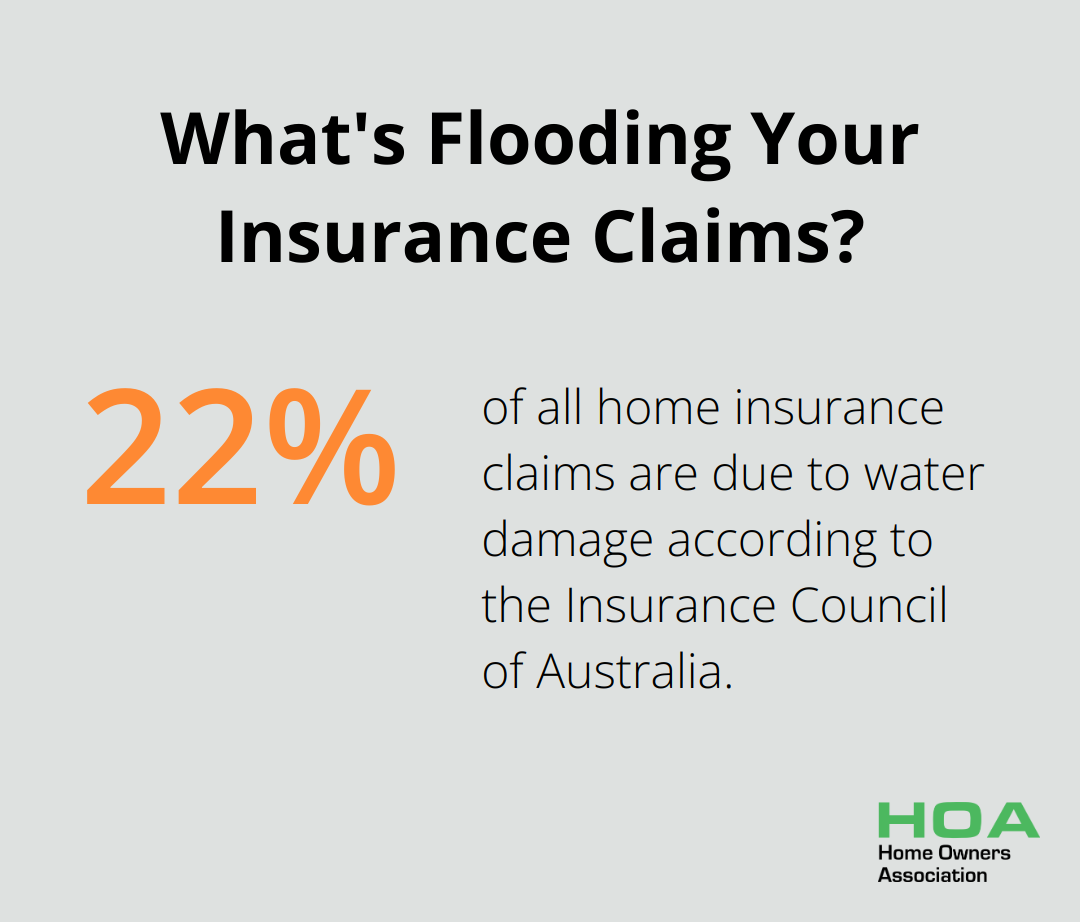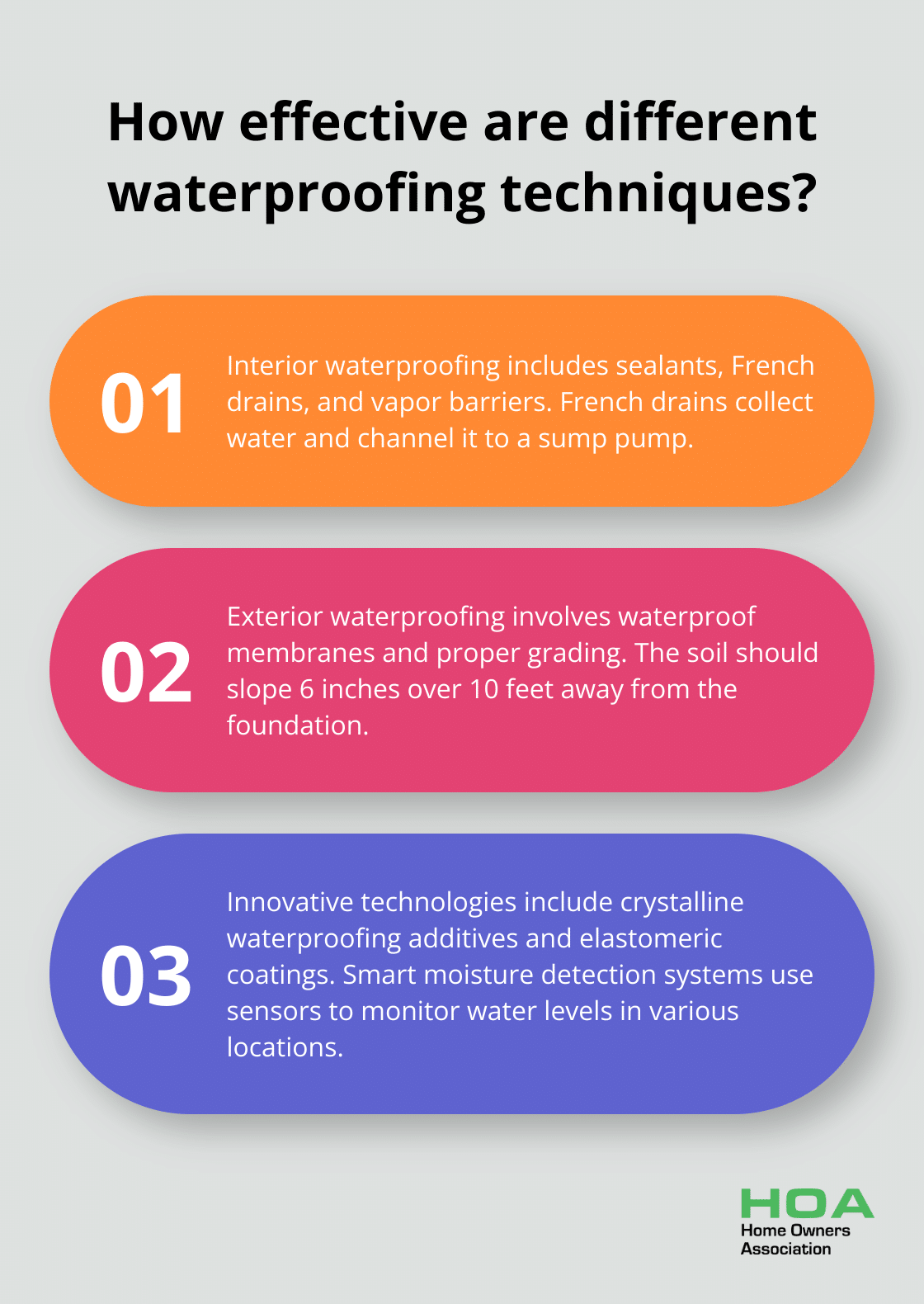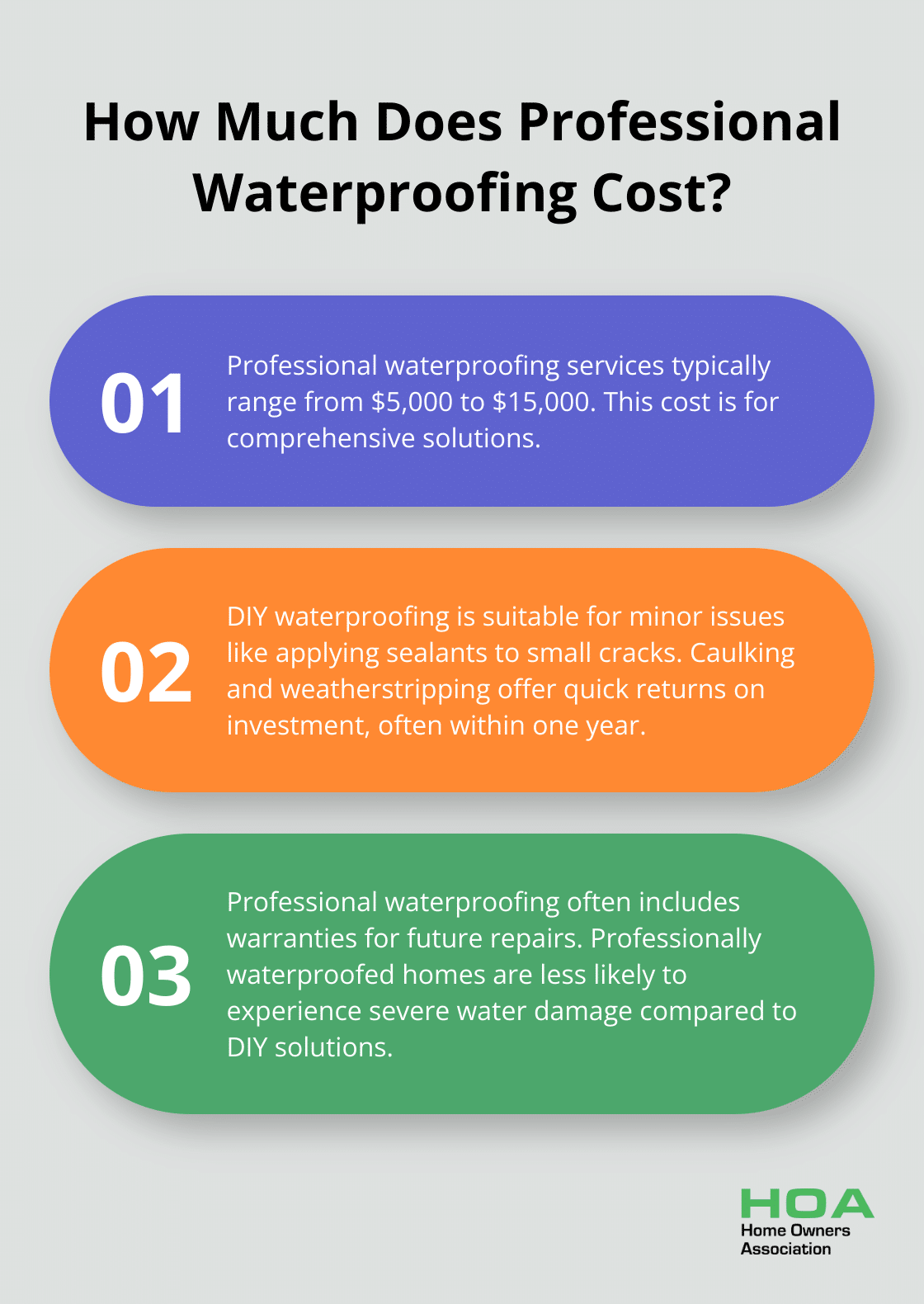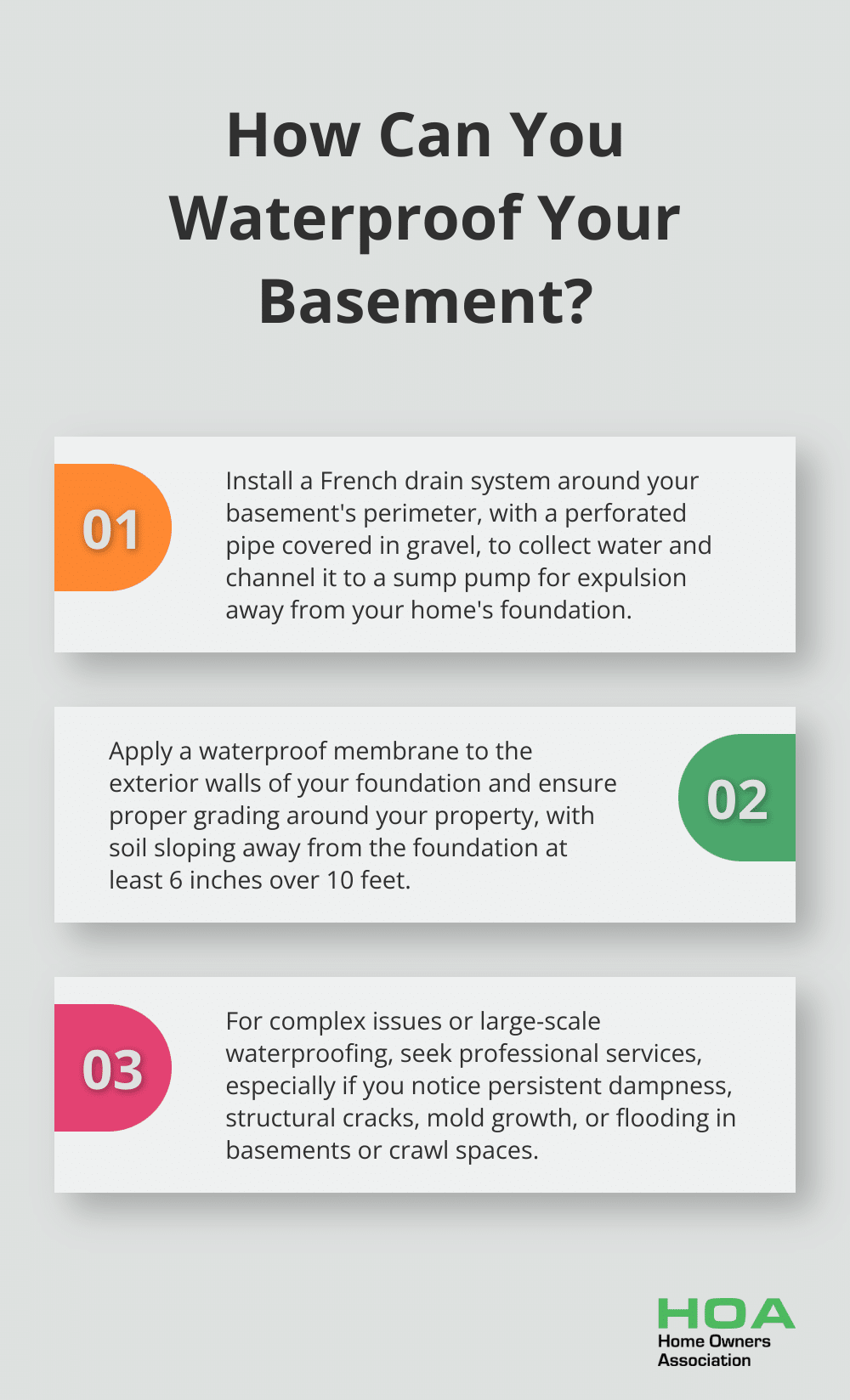
At Home Owners Association, we understand the critical role of home care waterproofing in protecting your property. Water damage can lead to costly repairs and compromise the structural integrity of your house.
This guide will explore effective waterproofing methods, materials, and when to seek professional help. We’ll equip you with the knowledge to safeguard your home against moisture-related issues.
What Is Home Waterproofing?
Definition and Purpose
Home waterproofing is the process of protecting your property from water intrusion. It’s a vital aspect of home maintenance that safeguards your investment and prevents costly damage. Effective waterproofing can save homeowners thousands of dollars in repairs.
The Significance of Waterproofing
Waterproofing your home extends beyond preventing leaks; it preserves the structural integrity of your property. The Insurance Council of Australia reports that water damage claims account for 22% of all home insurance claims, making it one of the most common and expensive issues faced by homeowners.
Vulnerable Areas
Certain areas of your home are more susceptible to water damage than others:
- Basements and crawl spaces (often below ground level)
- Roofs (especially those with poor drainage)
- Windows and doors (if not properly sealed)
Recognizing Water Damage
Early detection of water damage is essential. Watch for these telltale signs:
- Discoloration or water stains on walls and ceilings
- Peeling paint or wallpaper
- Musty odors (often indicate mold growth)
- Warped or buckling floors
- Visible mold or mildew

The Australian Building Codes Board recommends you address water issues promptly to prevent further damage and potential health hazards.
The Price of Neglect
Ignoring water damage leads to severe consequences. The CSIRO provides an overview of the processes through which it has impact and creates value for the Australian community.
Home Owners Association helps members save an average of 30% on waterproofing materials through trade pricing and discounts. This makes tackling water issues early on a smart move for your home’s health and your wallet.
Effective waterproofing is an investment in your property’s future. Understanding the basics of home waterproofing and staying alert for signs of water damage is the first step towards protecting your most valuable asset. In the next section, we’ll explore various waterproofing methods and materials to help you choose the best solution for your home.
Effective Waterproofing Techniques for Your Home
Interior Waterproofing Solutions
Interior waterproofing serves as the first defense against moisture intrusion. Waterproof sealants applied to basement walls and floors create a barrier that stops water from penetrating concrete and masonry.

The installation of a French drain system offers another effective interior technique. This method involves creating a trench around your basement’s perimeter, installing a perforated pipe, and covering it with gravel. The system collects water and channels it to a sump pump, which expels it away from your home’s foundation.
A vapor barrier provides additional protection. This thin plastic sheet applied to walls and floors prevents moisture from entering your living space. The Building Code of Australia considers vapor barriers essential for controlling moisture in buildings and reducing mold growth risk.
Exterior Waterproofing Methods
Exterior waterproofing tackles the problem at its source by preventing water from reaching your home’s foundation. The application of a waterproof membrane to the exterior walls of your foundation acts as a shield, deflecting water away from your home.
Proper grading around your property plays a vital role in exterior waterproofing. The soil should slope away from your foundation (at least 6 inches over 10 feet). This ensures that water naturally flows away from your home instead of pooling around it.
Your gutters and downspouts require attention too. Clean and properly functioning gutters direct water away from your foundation. Try to extend downspouts at least 5 feet away from your home for optimal protection.
Innovative Waterproofing Technologies
The waterproofing industry continues to evolve, introducing new technologies for better home protection. Crystalline waterproofing additives for concrete cause microscopic water-blocking crystals to form in the concrete matrix, sealing pores and hairline cracks.
Elastomeric coatings offer another cutting-edge solution. These flexible, rubber-like membranes can be applied to various surfaces and expand and contract with your home, providing long-lasting protection against water intrusion.
Smart moisture detection systems have also gained popularity. These devices use sensors to monitor water levels in sump pumps, tanks, condensate pans, and overflow containers, alerting you to potential issues before they become major problems.
Choosing the Right Waterproofing Approach
The key to effective waterproofing lies in a comprehensive approach that combines interior and exterior methods. Consider factors such as your home’s age, location, and specific vulnerabilities when selecting waterproofing techniques. (Professional assessments can help identify the most suitable solutions for your property.)
Implementing a mix of traditional methods and innovative technologies can significantly enhance your home’s protection against water damage. (For example, combining a French drain system with smart moisture detection could provide both active and passive protection.)
The next chapter will explore the pros and cons of DIY waterproofing versus professional services, helping you decide the best approach for your home’s needs.
DIY or Professional Waterproofing: Making the Right Choice
Understanding DIY Waterproofing
DIY waterproofing can be appropriate for minor issues. Homeowners can often handle tasks like applying sealants to small cracks or installing weatherstripping around windows and doors. Caulking and weatherstripping are two simple and effective air-sealing techniques that offer quick returns on investment, often one year or less.

However, DIY methods have limitations. Without proper expertise, you might overlook underlying issues or apply ineffective solutions.
When Professional Services Are Necessary
For complex issues or large-scale waterproofing, professional services often become necessary. Signs that indicate the need for expert help include:
- Persistent dampness or water stains
- Structural cracks in walls or foundations
- Mold growth
- Flooding in basements or crawl spaces
Professional waterproofing services typically range from $5,000 to $15,000 for comprehensive solutions. While this might seem expensive, it’s a fraction of the cost of potential water damage repairs.
Comparing Costs and Benefits
When comparing DIY against professional services, consider long-term costs and effectiveness. DIY methods might save money initially, but improper application can lead to costly repairs in the future.
Professional waterproofing often includes warranties, providing peace of mind and potential savings on future repairs. Professionally waterproofed homes are less likely to experience severe water damage compared to those with DIY solutions.
Evaluating Your Situation
Before deciding between DIY and professional waterproofing, assess the extent of your water issues. Minor surface-level problems might suit DIY approaches, but anything involving your home’s structure or extensive water intrusion requires professional expertise.
Effective waterproofing is an investment in your home’s longevity and your family’s health. While DIY can be tempting, the stakes are often too high to risk inadequate protection. (When in doubt, consult with a professional to ensure your home receives the protection it deserves.)
Seeking Expert Advice
If you’re unsure about the best approach for your home, try to consult with a waterproofing expert. (Many professionals offer free assessments, which can help you make an informed decision.) These consultations can provide valuable insights into the extent of your waterproofing needs and the most effective solutions for your specific situation.
Final Thoughts
Home care waterproofing protects your property from water damage, preserves structural integrity, and maintains value. Professional solutions offer long-term benefits, including potential savings on repair costs and peace of mind. Water damage can cause significant harm before it becomes visible, making proactive measures essential to prevent escalation into costly repairs or health hazards.
Home Owners Association provides expert advice tailored to Melbourne homeowners’ unique waterproofing challenges. Our members receive exclusive trade pricing and discounts on waterproofing materials, making it more affordable to take action. We strive to ensure that your waterproofing efforts comply with Australian building standards and effectively address local conditions.

Take action now to assess your home’s waterproofing needs and consider the advantages of professional solutions. Your home represents a significant investment, and proper waterproofing measures will help safeguard it for years to come. (Don’t wait for water damage to occur before protecting your property.)





